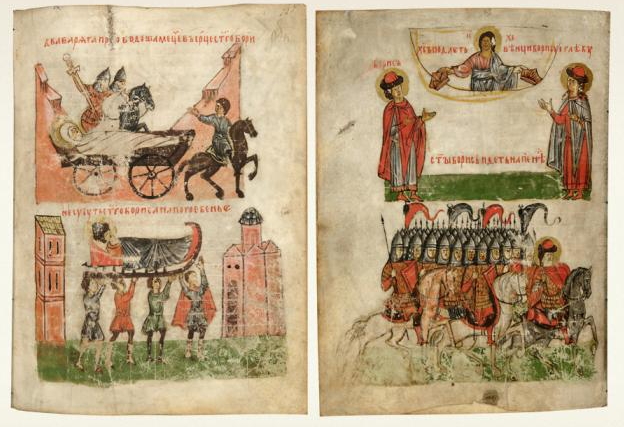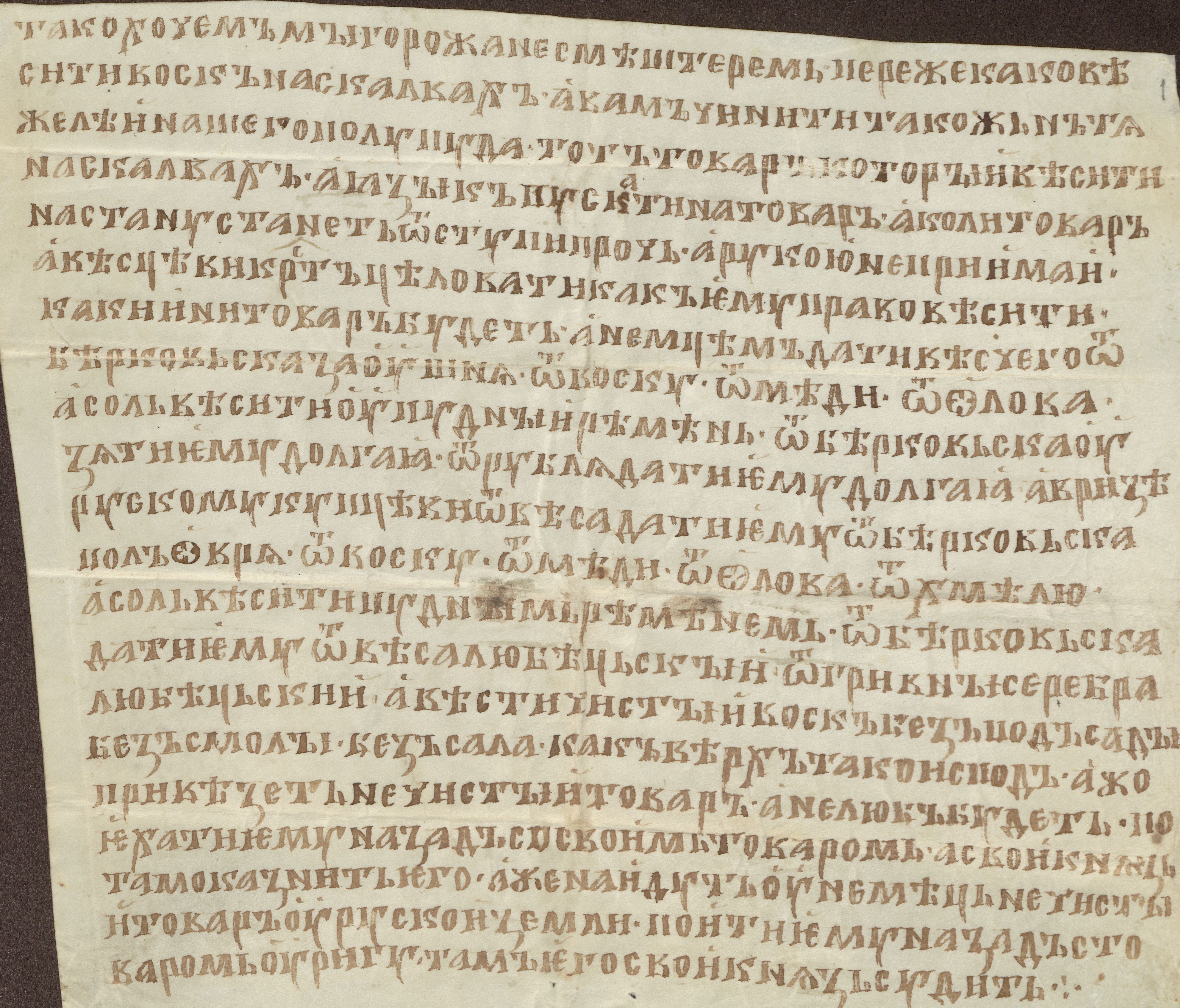
The Old East Slavic corpus includes original and translated texts in the Old East Slavic language, the common ancestor of Ukrainian, Belarusian, and Russian. The timespan is commonly assumed as before 1400, although Novgorod and Pskov acts included into the corpus may belong to the 15th century (the Middle Russian period).
The corpus comprises the following original Old East Slavic texts:
Old East Slavic chronicles: the Tale of the Bygone Years (Hypatian and Laurentian versions), Novgorod First Chronicle, Kiev/Kyiv, Halician/Halyč, and Volhynian chronicles, and the Laurentian chronicle as continued until 1305;
Hagiography, including the Boris and Gleb cycles in different versions, Kyivan Cave patericon, and other vitae;
Russkaya Pravda and other Rus' legal acts enacted by princes such as Ustav Vladimira;
Canonic rules such as Kirik's Questions and other texts;
Didactic tracts including anti-Pagan and anti-Catholic polemics, often transcribed as pseudepigrapha;
Old East Slavic pilgrimages (such as the one written by the hegumen Daniel who visited Palestine);
Other original literature including such celebrated texts as Hilarion's Sermon on Law and Grace, Vladimir Monomakh's corpus, texts by Kirill of Turaŭ/Turov, The Tale of Igor's Campaign, Praying of Daniel the Immured in two variants.
Charters and acts, both official and private, issued in Novgorod, Pskov, Polatsk/Polotsk, other Belarusian and Lithuanian regions, Ukraine, Moldavian Principality, and Moscow, before 1400 (for Novgorod and Pskov also until 1500).
The following translated texts were included:
Collections of quotations and wisdom literature: Izbornik of 1076, translated in Bulgaria and copied in Rus'; Melissa, or the Bee,
Byzantine Hagiography: Life of Andrew the Fool and Life of Basil the New; also Wonders of Nicetas, partly of Southern Slavic origin;
Josephus' Jewish War; Alexandria, a novel about Alexander the Great; Story of Ahikar the Wise, translated either from Greek or Syriac; Studite Monastic Regulations and Dialogue with a Jew.

